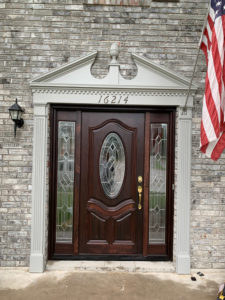Finance Your Front Door With Us Today!
At Southern Front Door, we take pride in providing our clients with the best options

Contact Southern Front Door for the front door, back door, or even side-garage door of your dreams!
at an affordable price. From now until the end of the year we are allowing all of our clients to refinance their next front door, back door, or side garage with 0% interest. Save on a stylish Wooden or Iron door by contacting us at (281) 890-5860 to learn more about our services and deals here at Southern Front Door.
What Are Wrought Iron Doors Made Of?
Wrought Iron consists of mainly iron. However, there are small amounts of aluminum, sulfur, silicon, and phosphorous which are all made the same. Furthermore, remember that wrought is considered “pure” iron since it contains mainly pure iron. The other 1-2% of material is the by-products mentioned, with 0.05-0.25% carbon.
How Wrought Iron Was Curated Historically
Wrought iron has been around for centuries and is still very common today. The earliest form of “modern” use can be traced back to the Han Dynasty of China from 202 B.C. to 220 AD. The Chinese found a way to develop the process by using a forge to warm the iron ore filter impurities. The substance was then pounded, cooled, and reheated a number of times. The more iron was worked, through heating, cooling, and reheating in the furnace, the more durable the substance. The more the iron strengthens the more impurities are removed.
How Wrought Iron Production Became Modernized
During the late 18th century, there was a range of smelting procedures that did not require placing the iron ore directly into the source of the heat. One of these many processes is called puddling which was curated by Henry Cort in 1784.
This process involves the iron ore being placed in a furnace without coming into contact with the heat source. Furthermore, the hot air is blown over the iron to heat it so that it can melt. As the iron begins to melt, it is stirred to help remove any impurities. Eventually, the pure iron slowly begins to float on top of the puddle of the melted iron ore.
From there, a blacksmith will cautiously replace the wrought iron from the furnace using a puddle bar. Next, the wrought iron is pressed or pounded to remove any impurities that may remain. Once the iron becomes cool, it can then be shaped into the desired item.
